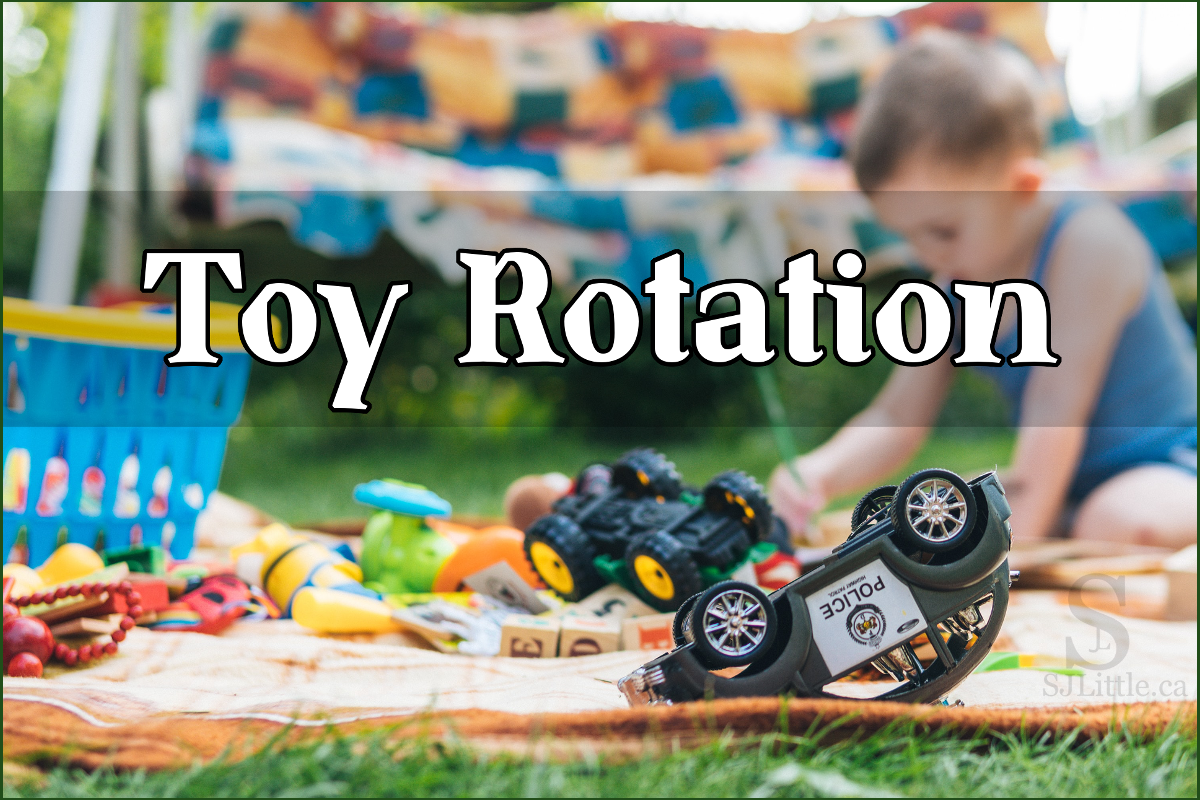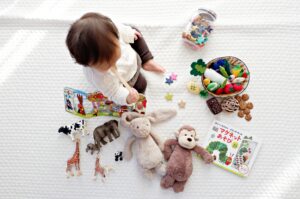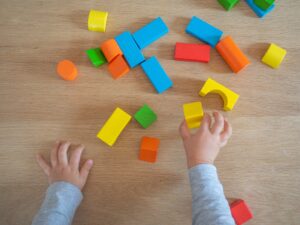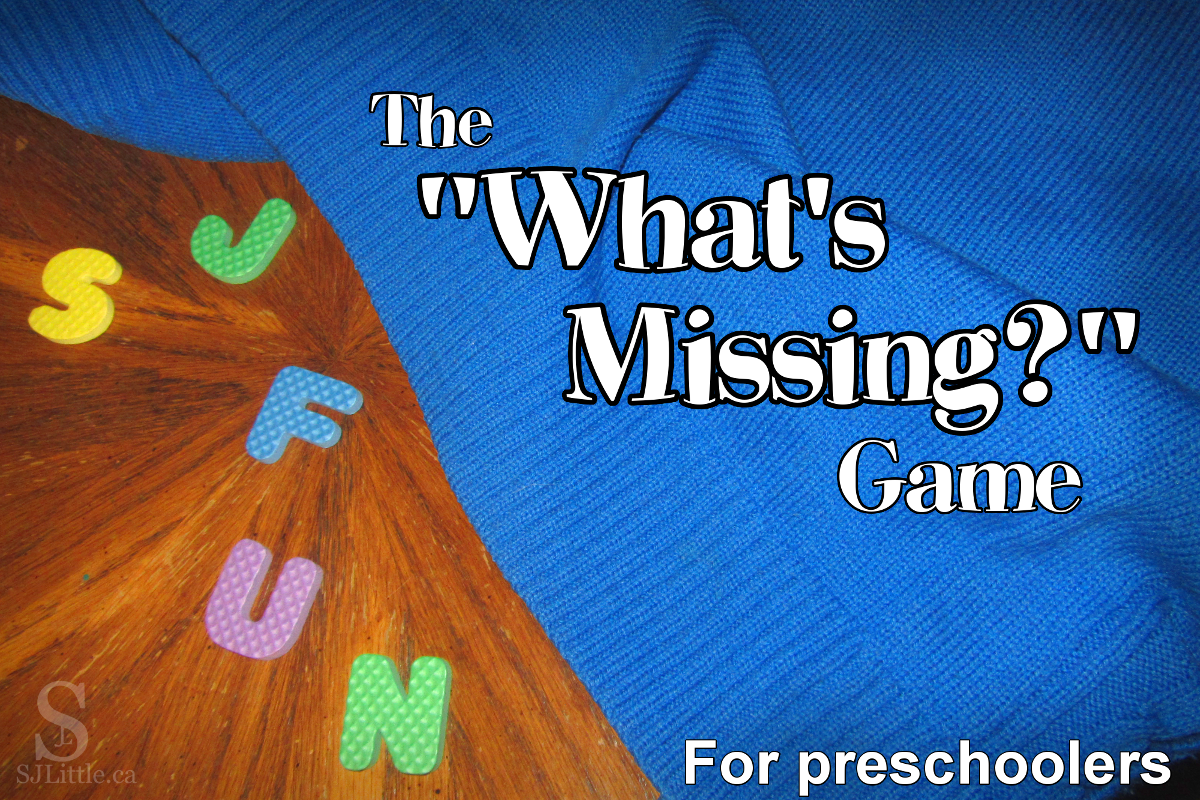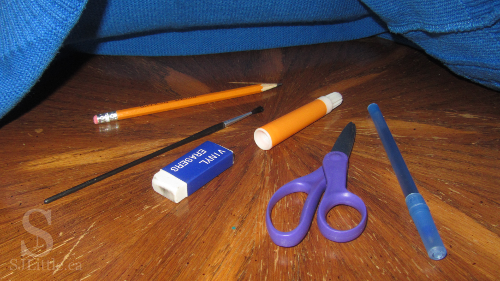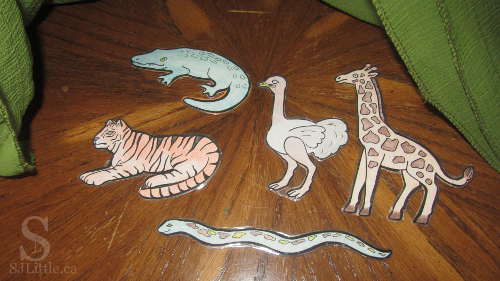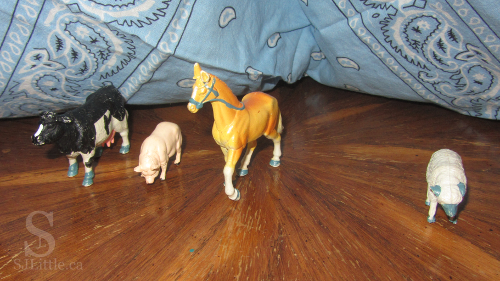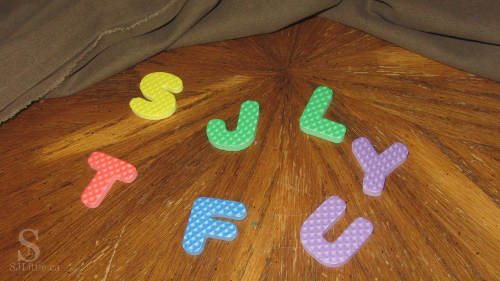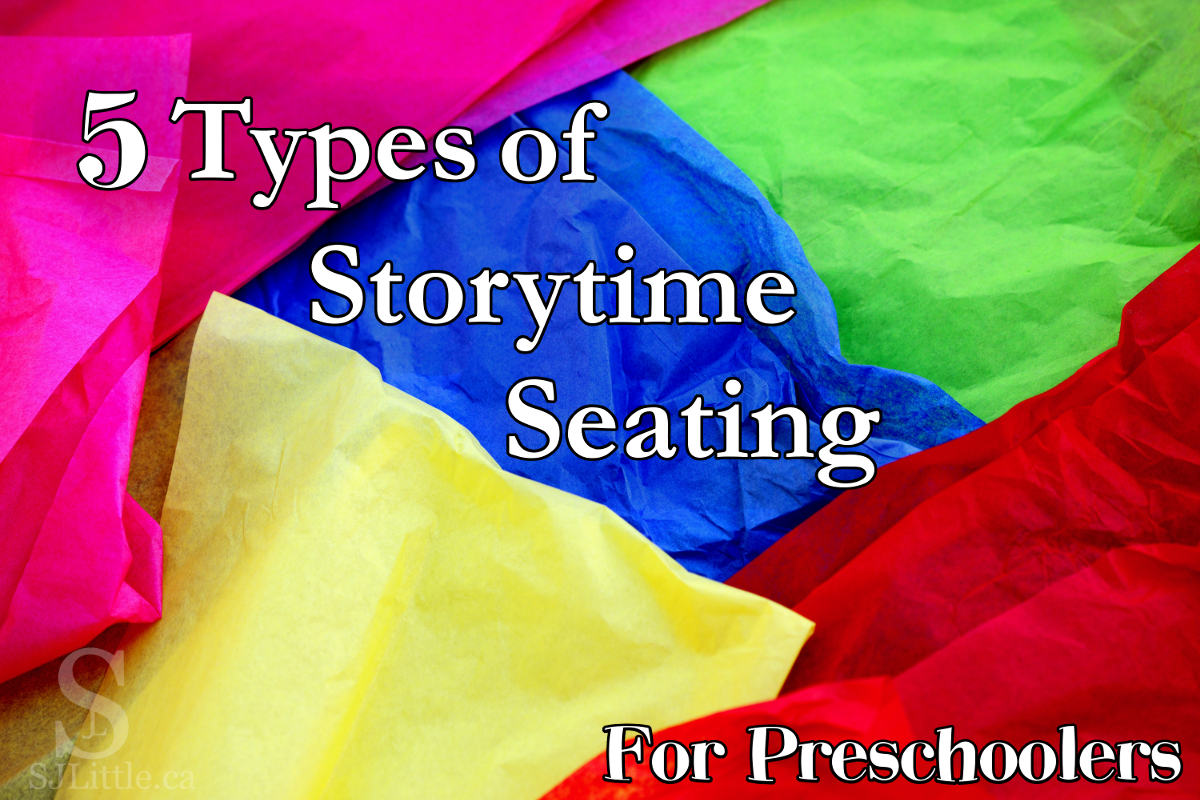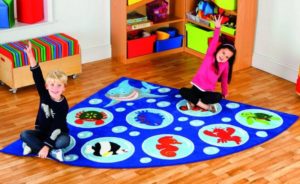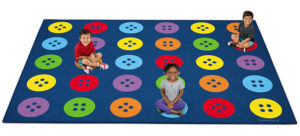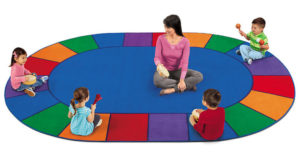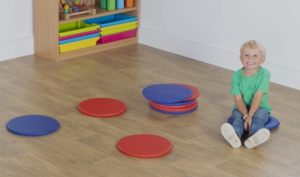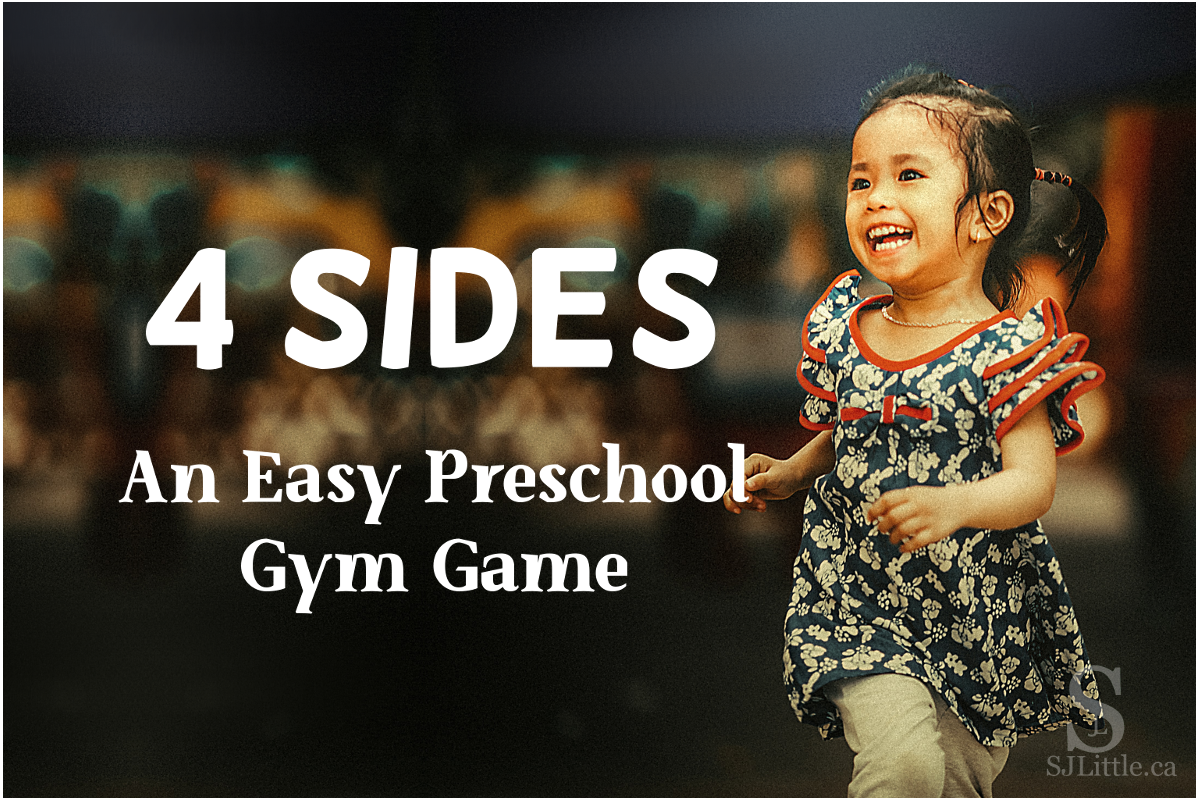
This game gets children moving with very little prep required. As an easy preschool gym game, it can be adapted to most spaces and adjusted for nearly any theme.
Set up
- Designate four areas as the sides the children will be running to.
- In a gym with four walls, consider attaching a piece of coloured paper or a poster to each wall. (When playing with a group of children, I prefer using a wall rather than a corner so that the children have room to spread out.)
- In an open area, such as a field, consider placing four different coloured hula-hoops to designate the four sides. (See other options below.)
Play
- To start the game, show the children each of the four sides.
- Call out an instruction, such as “Run to yellow!”
- Run with the children to the “yellow” side.
- Once everyone has arrived, call out another instruction. For example “Hop to blue!”
- Alternate between actions that are exciting vs. quiet, fast vs. slow, and tricky vs. easy. (See my list of suggested actions below.)
- Keep an eye on your children’s engagement level. As soon as they start losing interest, or preferably just before they do, wind up the game. Finish with one exciting action followed by one quieter action.
- Ending with a quiet action will help prepare your children for the transition into the next activity.
Age
- 2 Year Olds: At the basic level, this game works wonderfully with most 2 year olds. These youngsters will enjoy playing this game many times, if you change it up a bit each time.
- 3 Year Olds: This is a great game for 3 year olds! They especially enjoy it if you can give them opportunities to call out the instructions.
- 4 Year Olds: If you include more challenging actions, or perhaps increase the number of sides to 6 or 8, 4 year olds will enjoy this game. However, I recommend only playing it occasionally with 4 year olds, as they may begin losing interest if they play it too often.
Size of group
- 1 Child: This game can be played with one child. It will go best if you play it with the child. Take turns calling out the instructions.
- 2-8 Children: Having a small group of children makes this game more exciting, while enabling you to allow each child to have a turn or two calling the instructions.
- 9+ Children: This gym game is excellent with a large group of children. However, you may not have the time to allow each child a turn to call the instructions. Therefore, unless you are sure you can give every child a turn, it is likely best to call all the instructions yourself.
Ideas for the four sides
- If you don’t have walls to attach papers to, try using different coloured hula hoops, cones, or blankets. Alternatively, choose pre-existing objects to run to such as a bench, a flagpole, or a tree, etc.
- If you have walls to attach papers to, your options are endless! For younger children, stick with simpler options, but for older children, enjoy challenging them with new vocabulary that is trickier.
- Blank coloured paper: could be basic colours (red, yellow, blue, green), or more tricky colours (purple, orange, brown, grey). You could even do themed colours (for Valentine’s day: red, pink, white, purple).
- Shapes cut from paper: For 2 year olds, I have done basic shapes (circle, square, triangle, star). For older children try trickier shapes (rectangle, octagon, trapezoid, oval). You can cut whatever shapes you want! For example, you could do pet themed shapes (cat, dog, fish, bird).
- Posters: if you are in a preschool or childcare facility, chances are you have various posters around. Why not use some of them? You could use transportation, zoo, or dinosaur posters to match the game with what the children are learning. (If you don’t have posters, colouring sheets could work.)
- Flat objects: Consider using foam letters or large puzzle pieces for the four sides. So long as the four objects can be clearly distinguished by name, you can use just about anything.
Ideas for actions
- Changing up the actions will help ensure a full-body workout for your preschool children. Be sure to use a variety of easy and challenging actions!
- Basic actions:
- Easy
- Run
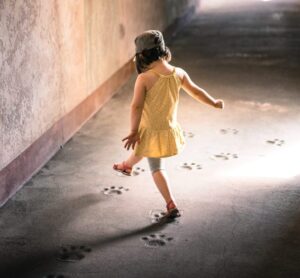
- Hop
- Fly (running with arms out as wings)
- Stomp
- Crawl
- Run
- Medium
- Skip
- Walk sideways
- Tiptoe quietly
- Slow
- Long steps
- Tiny steps
- Spin
- Slither (or army crawl)
- Bear crawl (on hands and feet with knees straight)
- Hard
- Hop on one foot
- Crab walk (on hands and feet with tummy facing up)
- Walk backwards (not recommended for larger groups, though it can work if you let them go two or three children at a time)
- Easy
- Other actions: Children have incredible imaginations! Engage their creativity with theme-based actions.
- Zoo
- Stomp like a hippo
- Walk like a giraffe (stretch arms up and take long steps)
- Run fast like a cheetah
- Waddle like a penguin
- Hop like a kangaroo
- Dinosaur
- Growl like a t-rex (make short arms and run while growling)
- Stretch like a brachiosaurus
- Fly like a pterodactyl
- Stomp like a triceratops
- Bugs
- Buzz like a bee (make tiny wings with hands and run while buzzing)
- Fly like a butterfly (flap arms as large gentle wings while crossing slowly and quietly)
- Jump like a grasshopper
- Crawl like a ladybug
- I think you get the idea so I’ll stop my list here. This game could also work with themes such as: farm, under the sea, transportation, emotions, sports or Olympics.
- Zoo
- Basic actions:
How to choose which action
- The basic way to play this easy gym game involves someone calling whichever action they want. (If you let the children make their own calls, you’ll end up with a lot of running!) Consider making the game more engaging and visually appealing for your children, especially if they are still learning English or have language delays by doing one of the following:
- Dice:
- Before playing the game, choose 6 actions and write them on a die. (You can make your own dice out of cardboard, or try looking for giant dice at your local dollar store.)
- Hand the die to the child who is calling the instruction. Whatever they roll, that’s the action you’ll do next.
- Use picture cards:
- Use themed cards, such as animal cards, to determine the next action.
- The child who is calling the instruction pulls a card from a bag (looking or not looking, you choose). Whatever action is on the card, that’s what everyone does.
- If you don’t have picture cards or action cards to use, you can likely find some online to print. As another option, print a copy of my Free Zoo Animal Skin Matching Game cards to use.
- Use small toys:
- Alternatively, look around at what you have. Small plastic animals could be drawn from a bag.
- Dice:
This easy preschool gym game will be a fantastic addition to your preschool gym games tool belt. You may even find that it becomes one of your favourites!
Need more action ideas, or want to share your variation of the game? Comment below.
Looking for more no prep, super easy preschool gym ideas to get your children moving? Here are some ideas:
Interested in a preschool song that can go with just about any animal theme? See “If You Want To Be A…”

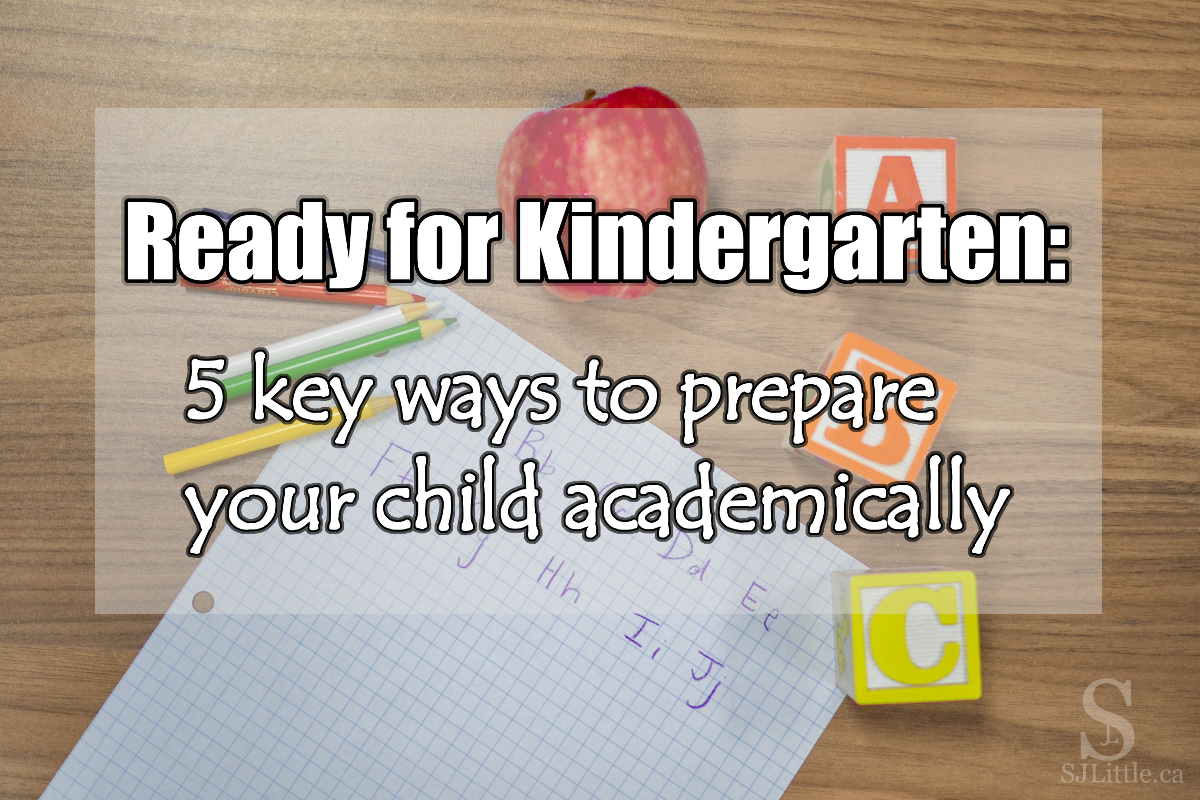
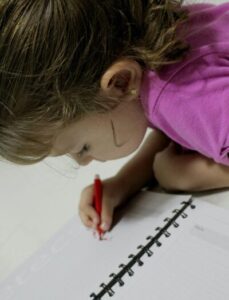 If they show interest in learning to write, by all means, do not hold them back. Perhaps buy them a workbook that shows which way to write each letter. The big key in teaching children to write correctly is thinking about where we start a letter. When we write “M”, we start at the top for each line. When we write “Z” it is one continuous line. A good rule of thumb to follow is that most letters start at the top.
If they show interest in learning to write, by all means, do not hold them back. Perhaps buy them a workbook that shows which way to write each letter. The big key in teaching children to write correctly is thinking about where we start a letter. When we write “M”, we start at the top for each line. When we write “Z” it is one continuous line. A good rule of thumb to follow is that most letters start at the top.
